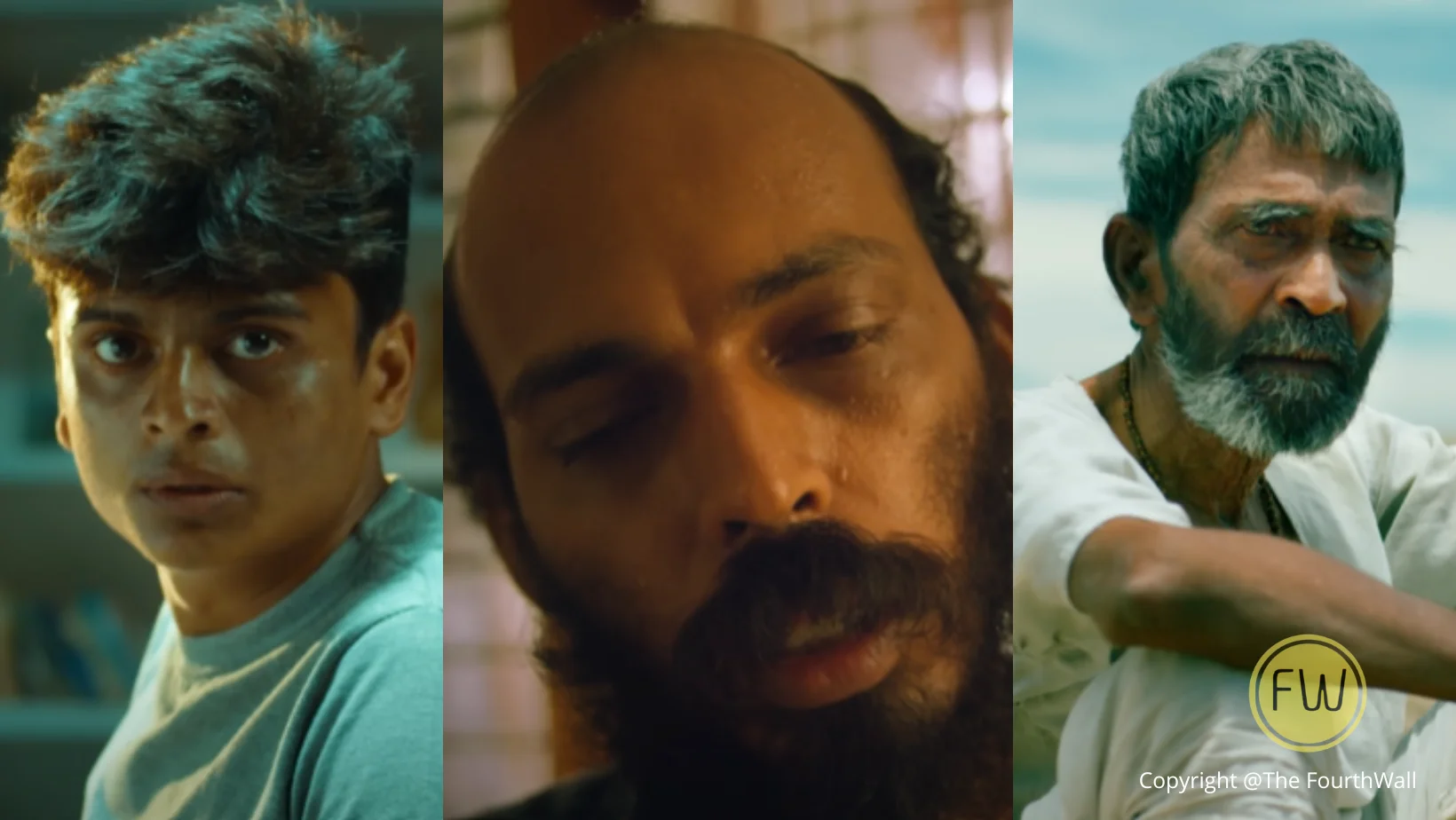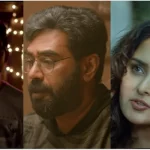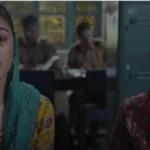Roopanthara Review: A Slow Burning, Beautiful Metamorphosis
Powerful storytelling combined with terrific performances—that’s how I’d like to remember Roopanthara. But it’s not that simple. The film is a layered, complex experience that lingers long after the credits roll, provoking thought and reflection in ways that few movies manage. This was my first time watching a Kannada film in a theater, and I went in knowing absolutely nothing about it. The only familiar face was that of Raj B Shetty, whose stardom does not overshadow other brilliant performances in the movie. Roopanthara, directed by Mithilesh Edavalath offers a narrative that is as intricate as it is ambitious, though it does test your patience with its slow-paced first half.
Also Read: 6 Underrated Malayalam Movies Worth Revisiting
The Slow Burn: A Pacing That Tests Patience
The movie opens in a post-apocalyptic world, a setting that immediately piques interest. Here, a storyteller finds himself in a dire situation: he must narrate four stories if he wishes to survive. This premise sets the stage for the film, but the first half takes its time to lay the groundwork for these stories. For some, this deliberate pacing might feel sluggish, but it’s a necessary buildup. The foundation is carefully constructed, and the patience it demands is rewarded in the second half, where the film reveals its true brilliance.
Four Stories, One Narrative
Roopanthara centers on four main characters: a goon from Bengaluru, a police constable, a teenager addicted to the dark web, and a couple from North Karnataka. These characters form the backbone of the narrative, each representing a different facet of the human experience. Through them, the film delves into the complicated yet satisfying journey of transformation—a theme that resonates throughout. The analogy of a worm undergoing metamorphosis to become a butterfly is beautifully woven into the narrative, symbolizing the characters’ personal evolutions. However, the film also acknowledges that not every worm can become a butterfly, adding a layer of realism to its exploration of change.
Also Read: Golam Movie Review

Each of the four stories brings something unique to the table. One story is funny, another thoughtful; one is cute, and yet another is tinged with a sense of dread. This variety keeps the viewer engaged, as the film moves seamlessly between different tones and themes. Among these, the story of the elderly farmer couple from North Karnataka stands out the most. Their journey to the city, driven by a desire to have some fun and enjoy each other’s company, is both heartwarming and deeply moving. Their sweet, enduring romance—still strong after all these years—easily wins the audience over. The performances of Somshekhar Bolegaon are pitch-perfect, bringing authenticity to the couple’s relationship that is both relatable and touching.
Also Read: Telugu Romance Movies to Watch
The Magic of Music and Silence in Roopanthara
The music in Roopanthara plays a significant role in setting the mood, especially as the film progresses towards its climax. There are moments where the background score fades away, allowing the raw emotion of the scenes to take center stage. This minimalist approach to sound design is highly effective, proving that sometimes, less truly is more. The absence of music in these key moments amplifies the impact, drawing the audience deeper into the narrative.
One of the most impressive aspects of Roopanthara is how it connects its four stories. The narrative threads are woven together with care, and as the film progresses, these connections become increasingly apparent. It’s a testament to the director’s skill that these stories, which initially seem disparate, converge in a way that feels organic and satisfying. That said, the ending, while powerful, could have been stronger. There’s a sense that the film holds back slightly, not fully capitalizing on the potential of its narrative buildup. However, this is a minor quibble in what is otherwise a masterfully told story.
Final Thoughts: Roopanthara – A Film About Transformation and Reflection
Ultimately, Roopanthara isn’t about big, grand gestures or sweeping cinematic moments. Instead, it finds beauty in the small things—in the quiet, introspective moments that make us pause and think about our own lives. The film invites us to reflect on our existence, our privileges, and the simple joys that we often overlook. It’s a film that stays with you, prompting reflection long after you’ve left the theater.
Image Courtesy: YouTube

I can’t stop talking about films, so I blog!
I started The FourthWall, my film blog, to share my thoughts on films and shows with fellow movie buffs, and over the years it has become my happy place. Come join in for some interesting conversations on cinema… and sometimes books and fashion!









2 thoughts on “Roopanthara Review: A Slow Burning, Beautiful Metamorphosis”